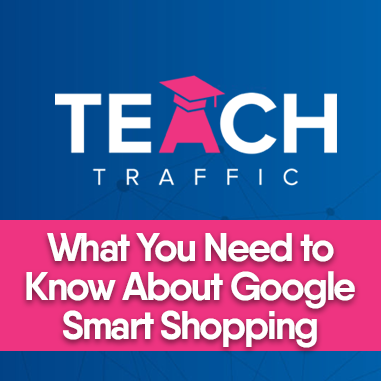What You Need to Know About Google Smart Shopping
First off, What Is Google Smart Shopping?
If you’re quite new in Google ads, Smart Shopping is one of the newest campaign types you can create in Google Ads. So what makes it special? Since it’s Google, they use their machine learning technology on the campaign to optimize and reduce the amount of time you spend on optimizing your campaigns. Neat right?
All you have to do as an advertiser is to enter your campaign’s objective and your budget and let Google’s Smart Shopping take care of the rest for you with their automated bidding and ad placements while you worry about the other things that needs attention to your campaign.
Do note that Smart Shopping ads are tailored for advertisers with smaller budgets, hence less time is needed to strategically maneuver it. According to Google’s early testing as well, advertisers who used Smart Shopping had an output of 20% more conversion value at a similar cost in their campaign.
So how does Smart Shopping works?
Smart Shopping works with your Google Merchant Center account by pulling product creatives in your product feeds via GMC. So it is important to for you to link your Google Ads to your Google Merchant Center account.
And as mentioned in the introduction, Smart Shopping uses machine learning just like Google’s ad format – responsive search ads. And this machine learning will serve the most relevant combination of your assets, be it visual or textual assets across from available campaign types such as: Search, Display, YouTube, and Gmail.
According to Google, it takes up to 15 days for the optimization process to take in place. Hence, more data are needed for you to run Smart Shopping.
How to Setup the Campaign & Budgeting
In Smart Shopping, it combines your standard shopping and display Remarketing campaigns. So If you’re using both of those campaign types in your accounts, be sure to pause them before targeting the same products using Google’s Smart Shopping.
In terms of budgeting, if you’re trying to figure out how much your budget should be then don’t worry. You can use your existing campaigns for Standard Shopping and Display Remarketing campaigns as your starting point.
For advertisers going for max performance and simplicity, Google recommends themselves that we should target all of the available products within one campaign.
Here’s how you can set it up, simply go to your Google Ads campaign dashboard and click ‘New Campaign’:
Select Shopping as your campaign, then select the applicable Merchant Center linked into your Google Ads account and click Smart Shopping Campaign:
After that, choose your desired product groups and upload the available creative assets. By default, off eligible and existing products will be available to be selected unless you specify otherwise. But Google recommends against doing that.
Why? Because Google serves these Smart Shopping ads through the Google Display Network and they also look which products you will sell your possible customers have already interacted before in your website and then they will serve them the ads that feature the correlating information from your product feed.
FYI, just like what they are doing with Responsive Search Ads, they also do this on Smart Shopping campaigns wherein they automatically test different variations of the images and texts you provide for each product to determine the ad with the highest conversion value. And if your possible customers haven’t looked or interacted with any of your products, Google will then serve them ads based on the creative assets that you provided them.
Some of the important stuff to take note of, if you wanted to be eligible for the Smart Shopping campaign:
- You’re required to set up conversion tracking with transaction-specific values, and at least 20 conversions should be recorded over the past 45 days across your existing Shopping campaigns.
- A global site tag should be added to your website and 100 active users should be present in your Remarketing list. You may also use your Google Analytics account and manage your tags there.
- And most importantly, you need to meet the requirements for Shopping campaigns from Google.
